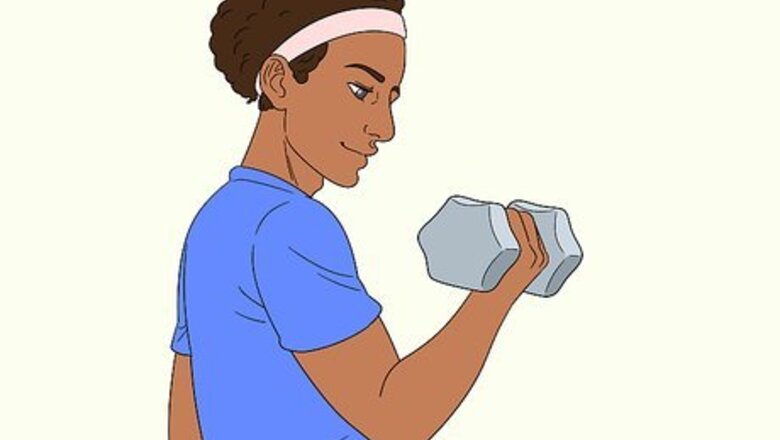
views
Working Out Safely
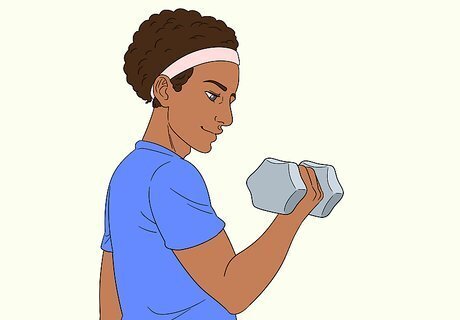
Start new workouts with light weights. Bicep tears are common when you overload yourself with too much weight. If you’re starting a new workout, especially if it involves lifting anything over your shoulders, then always start small. Get a feel for the exercise and when you’re comfortable, increase the weight. This is true even if you’re in great shape because your biceps still might not be accustomed to a certain motion. If you’re doing bicep curls, for example, try using only 5 lb (2.3 kg) dumbbells at first. Once you’re comfortable with the motion, add weight slowly until you feel a good workout and stick with that level. If you can’t do 10 reps of a workout comfortably, then the weight is too heavy for you. Scale it down until you can do 10 reps without stopping. Deadlifting is another common workout that causes bicep tears. Always make sure the weight is comfortable for you before doing a full set.
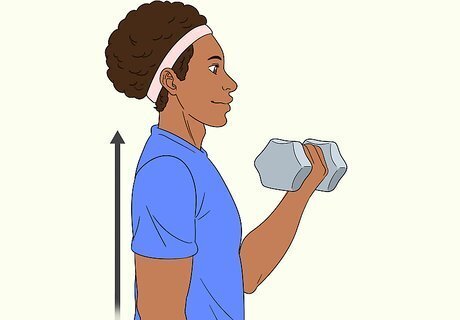
Use proper form for every workout you do. Besides using too much weight, improper form is the other leading cause of bicep tears. Use good posture and stand up straight when you lift so you don’t focus all of the weight on your biceps. If you’re doing an isolation exercise, make sure the weight is light enough for you to do the motion correctly. If you aren’t sure about proper form, ask a trainer at the gym to show you. You could also watch videos online of professionals demonstrating the correct technique.
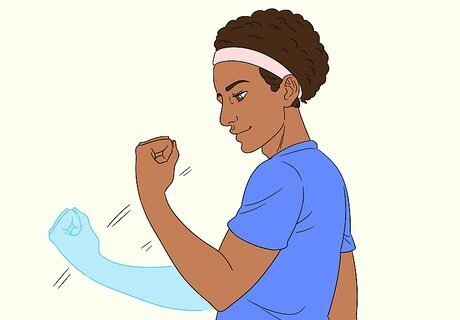
Rest in between sets so your muscles aren't overworked. Don't perform sets one right after the other. Rest for at least 1 minute in between sets to give your muscles a chance to recover. Shake your arms out a bit to bring more blood to your biceps and prevent them from tensing up. If your biceps are feeling very tired or sore, ease back on your workout. Rest longer or skip the exercise and train another muscle group. If you're doing circuit training by performing multiple workouts without stopping, then order the exercises so you don't do multiple bicep exercises in a row. For example, do a set of curls, then pushups, then crunches, and then pull-ups so the bicep workouts are spaced out.
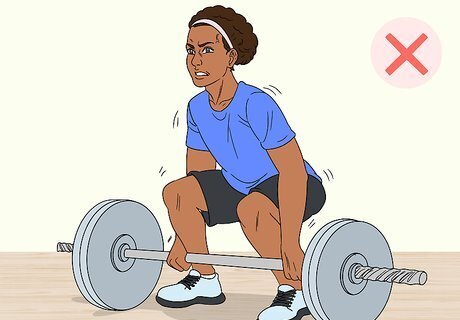
Avoid deadlifting if you've had bicep injuries in the past. Deadlifting is one of the most common exercises that causes bicep tears. While it can be a great exercise, it's very dangerous if you've had bicep injuries in the past. Skip this workout to prevent further bicep problems. If you do deadlift, always make sure the weight isn't too heavy for you to manage. Make sure you use proper form as well so you don't put too much stress on your biceps. The deadlift reverse grip, with one hand facing back and one facing forward, is one of the most common culprits for bicep tears. If you’re new to deadlifting, grab the bar with both hands facing back. When you get more experienced, then you can try the reverse grip.
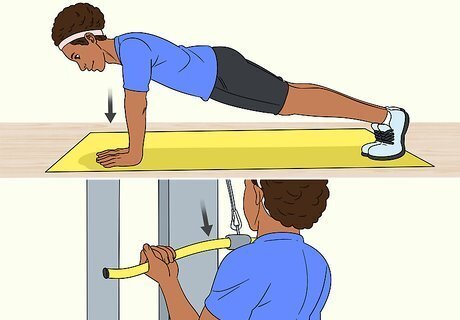
Train your whole upper body so your biceps aren’t overstrained. Training only your biceps leaves your upper body unbalanced, which can lead to pulls or tears as your biceps overcompensate. Design a well-rounded weight-lifting program so you work your whole upper body. Train your triceps, chest, and upper back to keep yourself balanced. Pushups and dips are good for your chest and triceps. Rows or pulldowns work your upper back and biceps. Try to mix up isolation and compound exercises that train multiple muscles. Curls isolate your biceps, so also do pulldowns to bring your upper back into the mix.
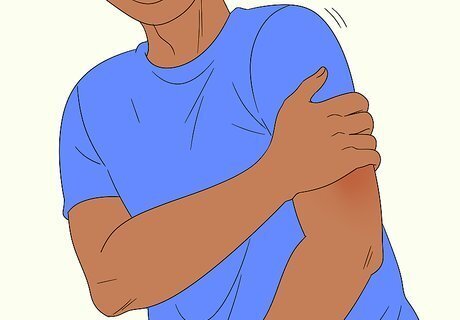
Stop right away if you feel any sharp pains. Pain like this is a sign that you’re putting too much stress on your body. Don’t try to push through it or you could make a minor injury much worse. If you can do it safely, drop the weight you were using. If not, lower it down to the ground and stop exercising. If you have any pain or soreness from a previous workout, rest a little longer. You could end up pushing yourself too hard and damaging your biceps.
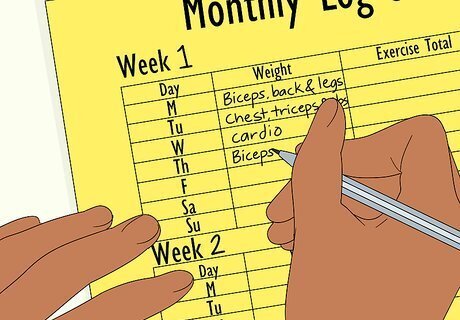
Rest your biceps in between training days. Allow at least 1-2 days in between training muscle groups to let them heal. This helps you build more muscle and avoid injuries. Design your workout schedule so you don’t train the same muscle group 2 days in a row. A good sample workout schedule is biceps, back, and legs on Monday, chest, triceps, and abs on Tuesday, cardio on Wednesday, then back to biceps on Thursday. Include 1 or 2 total rest days in your schedule as well. Only do light exercises like a walk on these days.
Loosening Your Muscles

Warm up for 10 minutes before exercising your arms. Always try to break a sweat before you stretch so your muscles are looser. Do 10 minutes of light running or brisk walking to get your heart rate up and prepare your muscles for more exertion. Some other more stationary activities are also good for warming up. Running in place, jumping rope, jumping jacks, or using an exercise bike all work as well. You should always warm up before any kind of exercise or sport. This prevents all kinds of injuries and soreness. If you often lift heavy objects or do repetitive motions for work, a good warmup routine can also prevent work injuries.

Do bicep stretches to loosen them before activity. After warming up, focus on loosening your biceps so they’re ready for activity. Do a series of simple bicep stretches to prepare.s Start by standing with your arms at your sides. Then, bend your elbows up like you’re doing a bicep curl and raise your hands to your shoulders. Repeat this with 3 sets of 10 reps to loosen up your biceps. Face a wall and place one hand flat against it at your shoulder level. Then roll your body in the opposite direction until you feel a stretch in your bicep. Hold that for 15 seconds and repeat it 3 times on each arm.
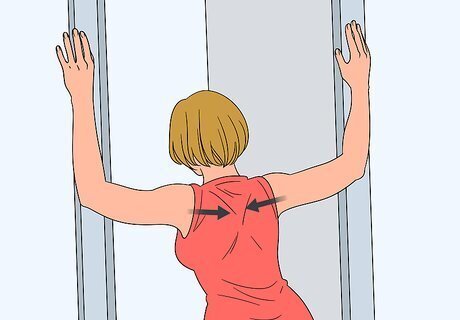
Perform back and pec stretches so your whole upper body is prepared. All the muscles and tendons in your upper body are connected, so make sure to stretch them as well. A few other stretches for the muscles around your shoulder will prepare the whole area for exercise. Stretch your pectoral muscles by standing just outside of a doorway. Point your arms up and press your forearms and hands against the door frame. Then lean forward until you feel a stretch in your chest. Hold that for 15 seconds and repeat it 3 times. Stretch your upper back by standing with your left side near a bar or doorframe. Reach over with your right hand and grab the bar. Turn your body to the right until you feel a stretch in your upper back. Hold that for 15 seconds, then switch sides. Repeat this 3 times on each side.
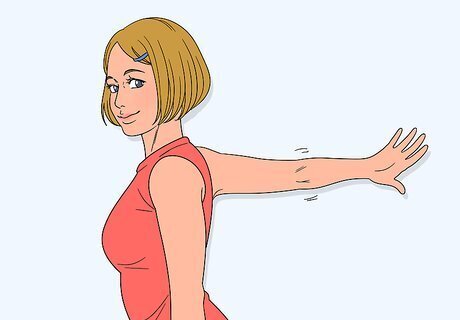
Stretch again after your workout to protect your muscles. When you’re finished exercising, another stretching routine helps prevent soreness and damage. Do the same stretches that you did before working out to keep your biceps loose and ready for the next workout. A light cool down exercise like jogging also helps prevent injuries.
Protecting Your Biceps in Everyday Life
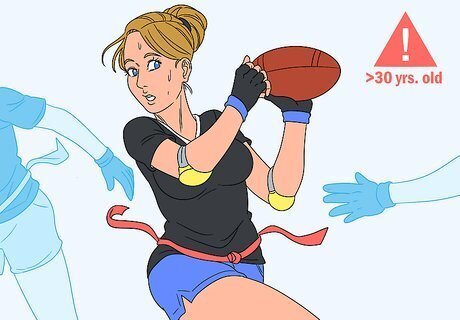
Use caution playing sports if you’re over 30. Bicep tears are much more common in people older than 30 because tendons and muscles degenerate over time. If you regularly play sports, especially contact sports, be extra cautious. Don’t land on your shoulder or make contact with someone by leading with your arms. This could push your biceps back and cause a tear. Try to suggest a non-contact version of a sport instead, like flag football instead of tackle. This keeps everyone safe. Protect your arms in other sports as well. If you’re playing baseball, for example, don’t land on your shoulder when you slide.
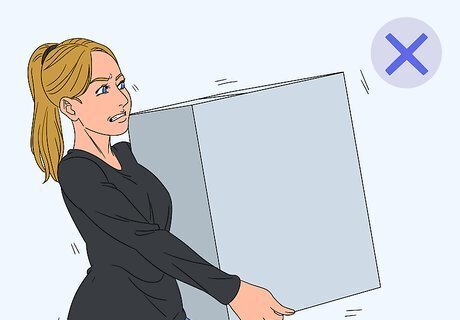
Avoid lifting items heavier than you can handle. Just like you shouldn’t use too much weight when you exercise, you also shouldn’t try to lift too much weight in your everyday life. If you can’t lift something without straining, ask someone for help. This protects your biceps and other muscles as well. When you do lift a heavy object, don’t outstretch your arms. This stresses your biceps. Instead, hold the item as close to your body as you can. Also don’t lift heavy items above your head if you don’t have to. This puts a lot of strain on your shoulders.

Let a heavy object fall if you drop it to prevent muscle strains. A common way people experience bicep tears is trying to catch a heavy object that they dropped. If you do lose your grip on something, don’t try to catch it. The item might break, but you’ll avoid a painful and prolonged injury. If you feel yourself losing your grip on something, put it down right away before you drop it. This saves the item and your muscles. Working with a partner makes moving objects much safer and easier.

Quit smoking or don’t start at all. There is a direct correlation between smoking and muscular injuries. Smoking inhibits oxygen from reaching your muscle and tendons, making them tighter and more brittle. If you smoke, stop as soon as possible. If you don’t smoke, then don’t start in the first place to avoid long-term damage. Quitting smoking has all kinds of other health benefits. Your health as a whole will improve if you quit or avoid it altogether.


















Comments
0 comment